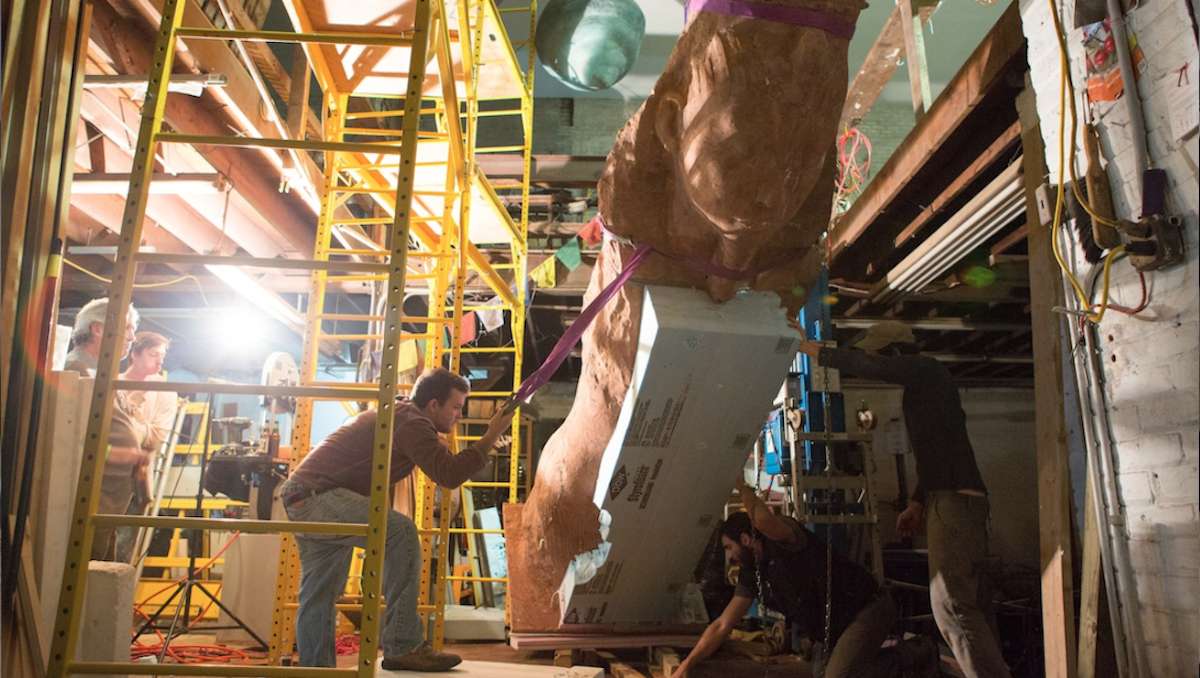King Tut statue created in Germantown unveiled at Texas museum [video]
Late on Halloween night, Miguel Antonio Horn began unearthing a giant concrete sculpture of King Tutankhamen with a team of fellow artists in Germantown.
Horn had been commissioned by the Brownsville Museum of Fine Art with a grant from the Brownsville (Texas) Community Improvement Corp. to produce the four-meter statue to accompany a special exhibition of Egyptian artifacts.
In addition, the sculpture will be the newest public art installation for Linear Park, a sculpture garden just outside the Brownsville Museum.
The local art team
Having never worked with concrete before, Horn turned to two Germantown artists who specialize in it: Kate Kaman and Joel Erland of HumanKind Design.
“It was a totally new process,” said Horn, who brought the pair into the fold because they are “masters with concrete casting.”
Confidence in their abilities factored into the process, as well.
“It was quite a huge feat and, with their background in public art and scale as well, I knew it was something they could undertake,” he continued. “They have a wealth of knowledge of how to treat this material and really brought that idea into reality.”
How it came to be
Horn, a member of West Philadelphia’s Traction Company Collective Workspace, began the process with a 17-inch model that he needed to scale up to the four-meter height.
He did a three-dimensional scan of the model and then, with the help of NextFab in South Philadelphia, milled the negative space of the model into a styrofoam mold.
Next, he collaborated with Kaman and Erland on color and faux finish, settling on Erland’s proposed “scagliola” look to resemble Egyptian brown Quartzite.
Starting last Tuesday, Kaman and Erland, and studio assistants Alex Miller, Cory Kram and James Sullivan started a hand-casting process that took some 60 hours to complete.
The team filled the foam mold by hand with glass fiber-reinforced concrete (GFRC). Erland spent 12 hours hand casting the inside of the mold while hanging from a rope swing while another assistant, Jerome Paisley, lowered buckets of concrete by rope.
The GFRC needed 16 hours to dry.
Fruits of their labor
Late on Halloween night, it was time to remove the styrofoam mold to see if the process worked.
After several hours of prying with crowbars and hammers and chopping with axes, and with the help of a few friends, the sculpture was free of its foam mold and standing upright in Kaman and Erland’s studio.
“I’m psyched about how it came out,” said Horn. “It turned out beautifully — better than I could have dreamed.”
Horn and Erland worked until late the next morning applying grout and then using grinders to bring out the texture of the sculpture and give it a more ancient-looking finish.
Late in the morning of Nov. 1, they loaded it onto a truck for the trip to Texas.
“Colossus,” as Horn calls it, will be on display at the Brownsville Museum of Fine Art as of Thursday.
WHYY is your source for fact-based, in-depth journalism and information. As a nonprofit organization, we rely on financial support from readers like you. Please give today.



















